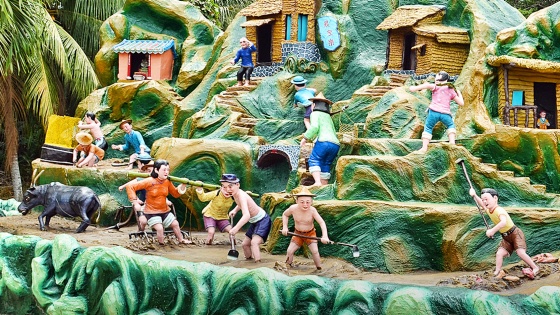
Overview
Haw Par Villa, often known as Tiger Balm Gardens, can be an legendary topic park located in Singapore. This unique attraction features website visitors a glimpse into Chinese mythology and folklore by means of its breathtaking and intricate statues, dioramas, and reveals. Let us take a closer consider the key aspects of the fascinating spot.
Record:
Haw Par Villa was originally designed by Aw Boon Haw, the magnate behind the renowned Tiger Balm ointment. The park opened its doors in 1937 as a means to both of those entertain and educate men and women about standard Chinese values, background, and beliefs. Through the entire many years, it has gone through various renovations but has managed to retain its authentic attraction.
Mythological Figures:
One of the main highlights of Haw Par Villa is its vast selection of statues depicting people from Chinese mythology and legends. Visitors will come upon figures like Journey on the West's Solar Wukong (the Monkey King), 8 Immortals from Daoism, and important deities like Guanyin (Goddess of Mercy) and Buddha Shakyamuni.
Theme Parks within Haw Par Villa:
Within Haw Par Villa alone are many distinctive locations or sections:
10 Courts of Hell: Perhaps Among the most intriguing parts of Haw Par Villa is exploring "The 10 Courts of Hell." Below site visitors can witness graphic scenes depicting punishments for many sins determined by conventional Chinese beliefs about afterlife retributions.
Taoist-Mythology Sculptures: This place showcases spectacular sculptures depicting stories from ancient Taoist myths. These vivid artworks provide to lifetime tales which have been handed down by way of generations in vivid element.
Backyard garden Sceneries: Over and above mythological sculptures lie serene gardens full of picturesque landscapes adorned with beautiful flowers and crops—a perfect Room for site visitors to chill out amidst mother nature's magnificence or love an informal stroll.
Teochew Opera Centre: The Teochew Opera Centre is a conventional theater setting that regularly hosts performances from the Teochew opera, a major method of Chinese musical drama with distinct regional properties in its costumes, new music, and storytelling.
Cultural Significance:
Haw Par Villa retains huge cultural importance as it offers a chance to check out different elements of Chinese culture, folklore, and spiritual beliefs. It serves as the two an open up-air museum in addition to a place for communal activities like festivals or academic plans enabling site visitors to gain insights into historic Chinese traditions.
Also, the park's primary intention was to educate readers about ethical values by way of vivid depictions of heaven and hell – satisfying advantage and condemning vices. Consequently Haw Par Villa acts as don't just an amusement park but in addition a ethical guidebook training critical moral concepts from regular Chinese philosophy.
Modern Relevance:
Despite currently being built many years ago, Haw Par Villa carries on to attract locals and travelers alike resulting from its uniqueness and timeless charm. The park has managed to blend tradition with modern features by organizing situations which include artwork exhibitions, lantern festivals during mid-autumn celebrations showcasing the fusion in between modern day aesthetics and vintage themes connected with the villa.
In recent times, there have already been efforts by authorities to refurbish aspects of the attraction though making sure its historic authenticity. This ongoing servicing ensures that website Haw Par Villa stays accessible for generations to return whilst preserving its loaded heritage worth.
Summary:
Haw Par Villa stands out among Singapore's sights for its immersive working experience into legendary realms as a result of intricately-built sculptures depicting deities, legends, morality tales and punishments in Taoist mythology-encouraged gardenscapes - all in just a reflective natural environment emphasizing lifetime lessons according to compassion shown toward Some others since it conveys historic wisdom guided by moral principles conducive for self-improvement located amidst gorgeous scenic landscapes rendering it acceptable each for cultural exploration enthusiasts enthusiastic about China's wide mythology/heritage/backgrounds/legends concurrently(proporotinately with due rverence towards central topic of representing conventional Chinese culture and beliefs).